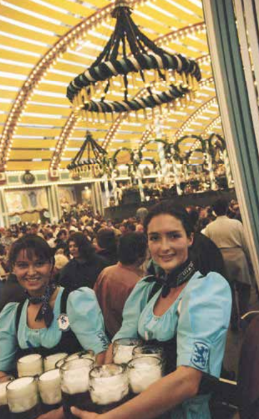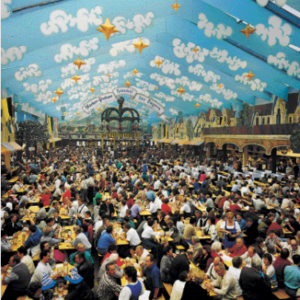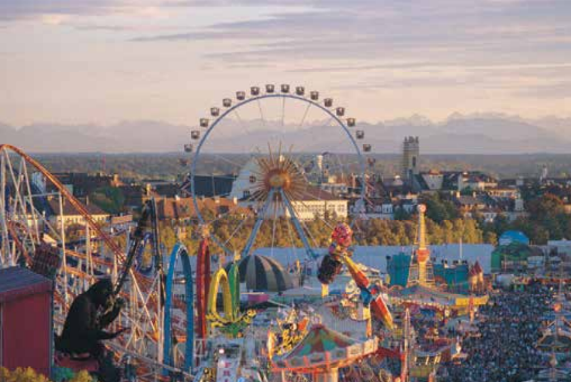Oktoberfest in Munich is the world’s largest and most famous beer festival, offering an authentic and immersive Bavarian experience. Held annually in late September and early October, it spans 16 to 18 days, attracting millions of visitors from across the globe. Here’s a breakdown of what makes the original Oktoberfest in Munich so special:
1. Location and Setting:
- The festival takes place at the Theresienwiese, an expansive open space in central Munich, which is transformed into a massive fairground filled with beer tents, rides, and food stalls. The setting captures Bavarian charm, with traditional decorations, colorful lights, and a lively atmosphere.
2. Beer Tents:
- Oktoberfest is synonymous with its iconic beer tents, which are temporary yet elaborate structures that house thousands of revelers. The festival is famous for its six major Munich breweries: Augustiner, Paulaner, Hacker-Pschorr, Hofbräu, Löwenbräu, and Spaten. These breweries serve special Oktoberfestbier, a slightly stronger lager brewed specifically for the event.
- Each tent offers a unique atmosphere, ranging from the boisterous Hofbräu Festzelt, known for international visitors, to the more traditional Augustiner Festhalle, which attracts a local Bavarian crowd.

3. Traditional Food:
- Oktoberfest is a culinary delight, with hearty Bavarian food like pretzels (Brezn), roast chicken (Hendl), pork knuckles (Schweinshaxe), sausages (Würstl), and a variety of cheese dishes (Käsespätzle). These dishes complement the beer, creating a perfect balance between food and drink.
4. Traditional Dress (Tracht):
- Many visitors embrace the spirit of Oktoberfest by wearing traditional Bavarian clothing. Men often don lederhosen (leather shorts with suspenders), while women wear dirndls (colorful dresses with aprons). Wearing these outfits enhances the immersive experience and connects visitors to Bavarian culture.
5. Parades and Music:
- One of the festival highlights is the Opening Parade of the Wiesn Hosts and the Costume and Riflemen’s Procession, showcasing the best of Bavarian culture, with horse-drawn beer carriages, folk bands, and participants dressed in historical costumes. Throughout the event, live oom-pah music (brass band music) fills the tents, creating a festive and energetic ambiance.
6. History and Tradition:
- Oktoberfest began in 1810 as a celebration of the marriage between Crown Prince Ludwig (later King Ludwig I) and Princess Therese of Saxe-Hildburghausen. What started as a royal event with horse races evolved into a beloved annual tradition, blending local culture with worldwide appeal.
7. Sense of Community:
- Despite its vast size, Oktoberfest maintains a sense of community. Tables are often shared by strangers, creating a social atmosphere where people bond over beer, music, and shared experiences.
8. Family-Friendly Atmosphere:
- While Oktoberfest is known for its beer tents, there are designated family-friendly days and areas, where the focus is on carnival rides, games, and cultural activities suitable for all ages.
9. Closing Ceremony:
- Oktoberfest ends with a memorable and emotional closing ceremony, with bands playing traditional Bavarian anthems and thousands raising their mugs for a final toast to Munich’s most iconic festival.









